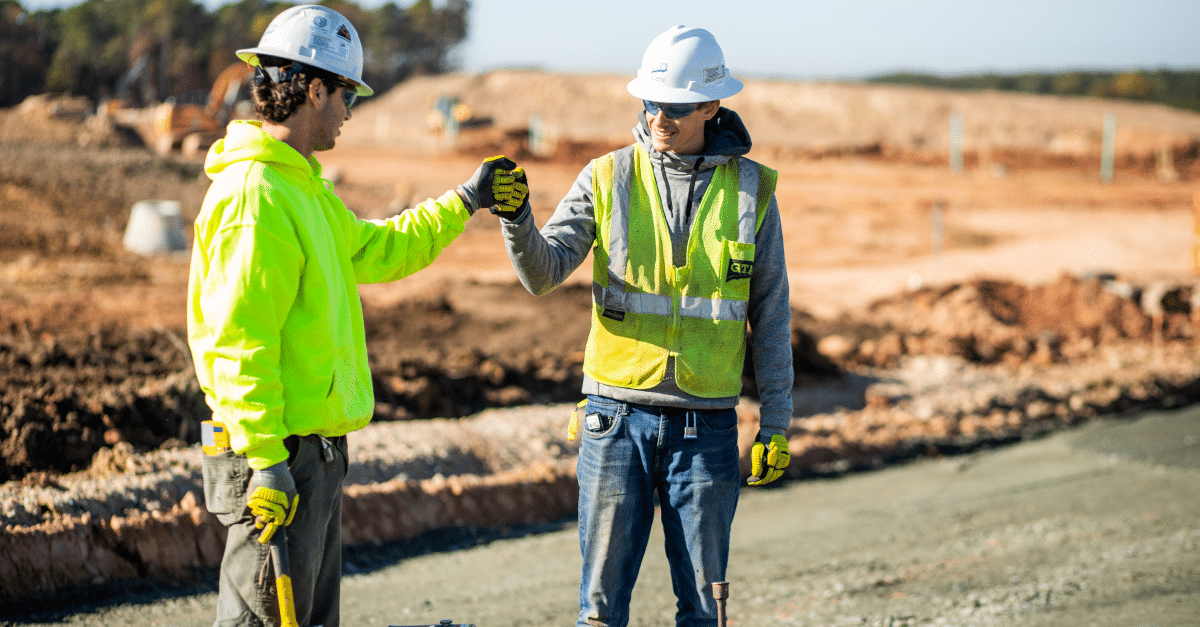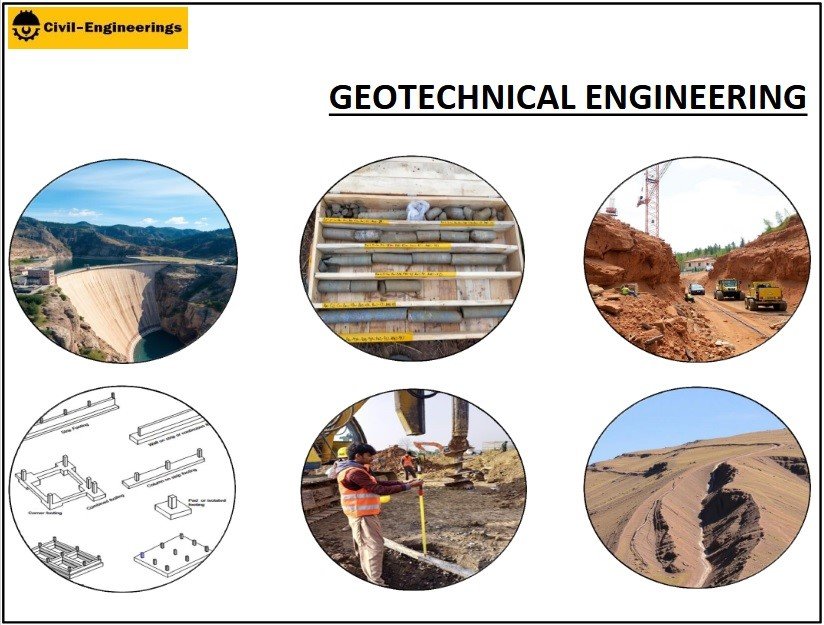10 Simple Techniques For Geotechnical Engineering For Construction Projects
Geotechnical Engineering For Construction Projects Things To Know Before You Get This
Table of ContentsSome Known Factual Statements About Geotechnical Engineering For Construction Projects The Greatest Guide To Geotechnical Engineering For Construction ProjectsThe Main Principles Of Geotechnical Engineering For Construction Projects The 3-Minute Rule for Geotechnical Engineering For Construction ProjectsHow Geotechnical Engineering For Construction Projects can Save You Time, Stress, and Money.The Greatest Guide To Geotechnical Engineering For Construction ProjectsThe Main Principles Of Geotechnical Engineering For Construction Projects
and Kovacs, W. (1981 ), An Intro to Geotechnical Engineering, Prentice-Hall, Inc. Deep Check Tech (2023 ): Deep Check Technology uncovers covert frameworks at the website of Denmark's tallest building. "Geofrost Coring". GEOFROST. Gotten 20 November 2020. Han, Jie (2015 ). Concepts and Practice of Ground Enhancement. Wiley. ISBN 9781118421307. RAJU, V. R.Ground Renovation Technologies and Case Histories. Singapore: Study Publishing Solutions. p. 809. ISBN978-981-08-3124-0. Ground Enhancement Concepts And Applications In Asia. Pariseau, William G. (2011 ). Layout analysis in rock mechanics. CRC Press. Hegde, A.M. and Palsule P (Geotechnical Engineering for Construction Projects).S. (2020 ), Performance of Geosynthetics Reinforced Subgrade Subjected to Repeated Car Loads: Experimental and Numerical Research Studies.
Cengage Knowing, Stamford, 666 p. Atkinson, J., 2007. The auto mechanics of dirts and foundations. The Observational Method in ground engineering concepts and applications.
The Facts About Geotechnical Engineering For Construction Projects Revealed
Research laboratory and area testing plays a crucial duty in this procedure. By drawing out examples from the earth's subsurface and applying a collection of tests, geotechnical designers can predict the behavior of dirt layers and assess their viability for various building and construction endeavours. The essence of geotechnical engineering in civil design can not be overstated, attributable to a number of variables: The initial action in any geotechnical study includes establishing the soil type at the building and construction website.
The structure acts as the bedrock of any kind of construction job. Picking the ideal structure type is a decision that hinges on the comprehensive analysis supplied by geotechnical design.

Geotechnical site investigation is a vital action in the preparation and execution of any type of building and construction job. It includes the collection and analysis of information connected to the physical residential properties of dirt and rock below a proposed construction site. This details is essential for the layout and building and construction of safe, stable, and lasting structures.
Some Known Factual Statements About Geotechnical Engineering For Construction Projects
, additionally recognized as subsurface exploration, entails a collection of activities intended at identifying the dirt, rock, and groundwater problems at a construction site. The main purposes are to recognize prospective geotechnical hazards, analyze the engineering properties of subsurface materials, and give referrals for the design and construction of foundations, maintaining wall surfaces, and various other structures.
This may consist of geological maps, aerial photographs, previous investigation records, and historic data. The desk research study assists in recognizing potential geotechnical concerns and planning the subsequent fieldwork. Following the desk research, a site reconnaissance is carried out to visually examine the site and its surroundings. This involves observing the topography, drainage patterns, existing structures, vegetation, and any kind of signs of instability or disintegration.
The Best Guide To Geotechnical Engineering For Construction Projects
Shallow examination pits are excavated to straight observe and sample the soil and rock. This approach serves for examining the top layers of the subsurface and identifying near-surface threats. Non-invasive geophysical methods, such as seismic refraction, ground-penetrating radar (GPR), and electric resistivity tomography (ERT), are used to map subsurface conditions and detect anomalies.
Soil and rock examples accumulated throughout the area investigation go through laboratory testing to establish their physical and mechanical buildings. Common laboratory tests consist of grain size evaluation, Atterberg limits, compaction tests, triaxial shear examinations, and combination examinations. These examinations provide necessary data for geotechnical analysis and style. The information accumulated from the workdesk study, site reconnaissance, field examination, and research laboratory screening are examined and interpreted to create a comprehensive understanding of the subsurface problems.
The key benefit of geotechnical site examination is ensuring the security and stability of structures. By comprehending the subsurface conditions, engineers can develop structures and various other architectural aspects that can stand up to the tons and ecological pressures they will certainly go through. This reduces the danger of negotiation, decrease, and structural failure.
8 Easy Facts About Geotechnical Engineering For Construction Projects Explained
This makes sure reliable and safe building and construction practices. Geotechnical website investigations are usually required by constructing codes and policies.
This details is vital for why not look here task managers, designers, and contractors in developing realistic routines, budget plans, and backup strategies. Geotechnical Engineering for Construction Projects. High-Rise Structure in a Coastal AreaIn a coastal city, a high-rise property structure was intended on a website with believed loose sand down payments and a high water table. A thorough geotechnical examination, including borehole exploration, CPT, and geophysical studies, was conducted
The Geotechnical Engineering For Construction Projects Ideas
Based upon these findings, the structure layout was changed to consist of deep pile foundations extending right into secure strata, and ground enhancement methods, such as vibro-compaction, were carried out to reduce liquefaction risks. This aggressive technique made certain the safety and security of the building while avoiding pricey post-construction useful site remediation. Infrastructure Growth on a Sloping TerrainA significant infrastructure task, including the building of a highway and bridges, was intended on an uneven terrain with steep slopes.

The Leaning Tower of Pisa (Italy), a renowned architectural wonder, is well known for its unexpected tilt from significant geotechnical concerns. The tower's foundation was improperly designed to manage the soft, unstable dirt beneath it, bring about uneven negotiation and its distinctive lean. Our globe is populated with outstanding framework projectsfrom looming skyscrapers to sprawling bridgesall standing testament to the evolution of the numerous building tools and techniques readily available.
Geotechnical engineering is a specific area within civil engineering that concentrates on studying the behavior of earth products. This branch dives deep into the groundinvestigating just how the read this dirt, rock, and groundwater at a building website can influenceand be influenced bythe framework that we put up on and into them. Before a single block is laid or a concrete foundation put, geotechnical designers probe right into the earthgathering critical information about the site's soil structure, rock framework, and groundwater levels.
The Best Strategy To Use For Geotechnical Engineering For Construction Projects

is a device made use of to assess the integrity and load-bearing capacity of piles during setup, leveraging the concept of wave breeding. It maximizes building and construction performance by offering real-time examinations, hence making certain secure and efficient stack structures. Among the functional applications of geotechnical design includes deciding and executing the appropriate methods for foundation building.
Stack driving represents greater than the mere act of putting structural components right into the ground. On the contrary, it is a carefully orchestrated procedure of moving a framework's tons past the less secure dirt layers better to the surfacedown to the a lot more considerable strata that lie beneath. In the instance of heap driving, take into consideration exactly how geotechnical engineers adeptly utilize this technique to uniformly distribute the framework's weight.